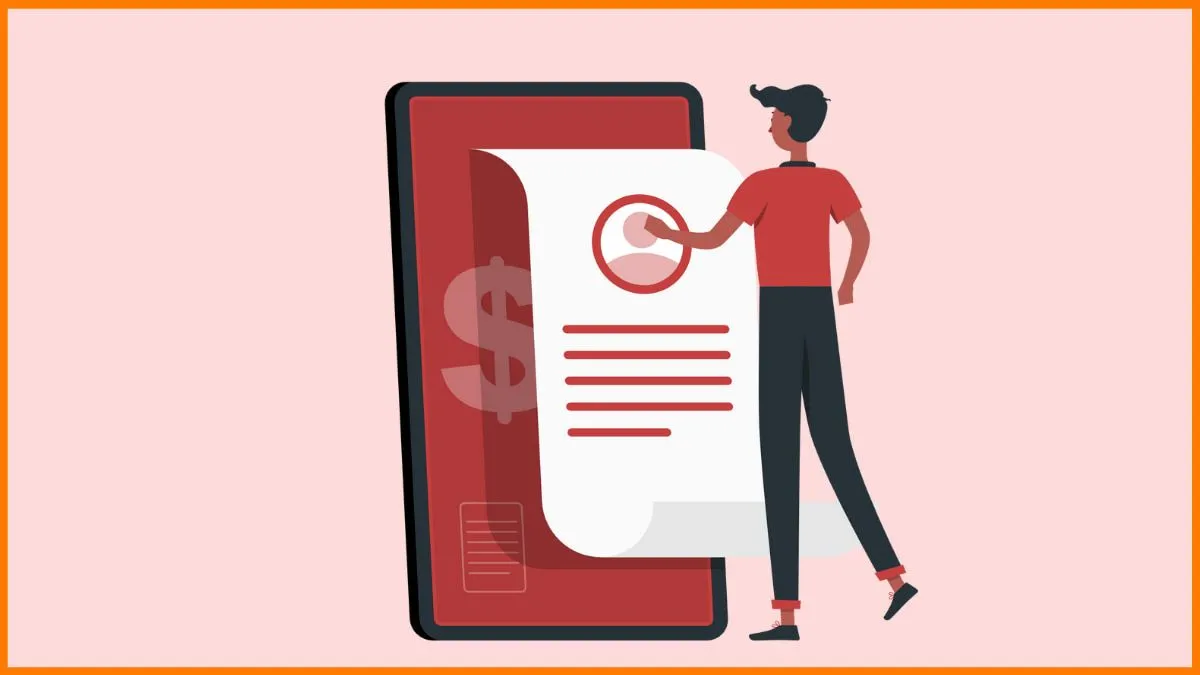In the dynamic landscape of modern business, the subscription economy has emerged as a transformative force, reshapinFg how companies deliver value, engage customers, and generate revenue. This shift towards recurring revenue models reflects changing consumer preferences and technological advancements, driving businesses across various sectors to rethink traditional sales paradigms. This comprehensive article explores the subscription economy, its drivers, benefits, challenges, and its impact on diverse industries. Through detailed analysis and case studies, we will uncover how the rise of recurring revenue models is redefining success in the digital age.
Contents
1. Understanding the Subscription Economy
Definition and Concept
The subscription economy refers to a business model where customers pay a recurring fee, typically on a monthly or annual basis, to access products or services. Unlike traditional one-time purchases, subscriptions emphasize continuous engagement, regular updates, and a sustained relationship between the provider and the customer. This model is prevalent in industries such as media, software, consumer goods, and even automotive services.
Historical Context
While subscription models have existed for centuries in the form of magazine subscriptions and utility services, the digital age has exponentially expanded their scope and scale. The advent of the internet, cloud computing, and mobile technology has facilitated seamless subscription experiences, enabling businesses to offer diverse and personalized services on a recurring basis.
2. Drivers of the Subscription Economy
Several factors contribute to the rise and proliferation of the subscription economy:
Technological Advancements
The rapid advancement of technology has been a key enabler of subscription models. Cloud computing, for instance, allows businesses to deliver software as a service (SaaS), providing continuous updates and scalability. Internet connectivity and mobile devices facilitate seamless access to subscription services, enhancing customer convenience and engagement.
Changing Consumer Preferences
Modern consumers prioritize convenience, flexibility, and personalized experiences. Subscription models cater to these preferences by offering on-demand access, tailored content, and the ability to cancel or modify subscriptions easily. The shift towards digital consumption, driven by streaming services, e-commerce, and mobile apps, aligns perfectly with the subscription paradigm.
Economic Benefits for Businesses
For businesses, subscription models offer several economic advantages. Predictable and recurring revenue streams enhance financial stability and enable better forecasting and planning. Subscription models also foster customer loyalty and retention, as businesses can continuously engage and provide value to subscribers. Additionally, the data collected from subscribers helps businesses understand customer preferences and behaviors, driving personalized marketing and product development.
Case Study: Netflix
Netflix, a pioneer in the subscription economy, revolutionized the entertainment industry with its streaming service. By offering a vast library of content on a monthly subscription basis, Netflix disrupted traditional pay-per-view and cable TV models. The convenience of on-demand streaming, coupled with personalized recommendations powered by data analytics, has driven Netflix’s global success and set a benchmark for subscription-based media services.
3. Benefits of Recurring Revenue Models
The subscription economy offers a multitude of benefits for both businesses and consumers:
For Businesses:
Predictable Revenue Streams
Subscription models provide businesses with predictable and recurring revenue, reducing reliance on one-time sales. This financial stability allows for better cash flow management, long-term planning, and investment in growth initiatives.
Customer Loyalty and Retention
Subscription models foster ongoing relationships with customers, enhancing loyalty and retention. By continuously delivering value, businesses can build trust and keep customers engaged over extended periods. This sustained engagement reduces churn rates and increases customer lifetime value.
Data-Driven Insights
Subscription businesses have access to a wealth of customer data, including usage patterns, preferences, and feedback. Analyzing this data enables businesses to refine their offerings, personalize marketing efforts, and develop products that align with customer needs. Data-driven insights also facilitate proactive customer support and targeted upselling or cross-selling opportunities.
Scalability and Flexibility
Subscription models offer scalability and flexibility, allowing businesses to expand their customer base without significant infrastructure investments. Cloud-based services and digital platforms enable seamless scaling, accommodating growing subscriber numbers and varying usage levels.
For Consumers:
Convenience and Flexibility
Subscription models offer unparalleled convenience, allowing consumers to access products and services on-demand. Whether it’s streaming content, receiving curated product boxes, or accessing software tools, subscribers enjoy the flexibility to use services as needed without the hassle of ownership or frequent purchases.
Personalization and Customization
Subscription services often provide personalized and curated experiences based on customer preferences and behaviors. From tailored content recommendations to customized product selections, personalization enhances customer satisfaction and engagement.
Cost-Effective Access
Subscriptions can be more cost-effective for consumers compared to one-time purchases. Instead of paying upfront for products or services, subscribers can spread costs over time, making high-value offerings more affordable. Additionally, bundled subscriptions and family plans offer further savings.
Continuous Updates and Innovation
Subscribers benefit from continuous updates, improvements, and innovations offered by service providers. Whether it’s new content releases, software updates, or product enhancements, subscription models ensure that customers always have access to the latest and best offerings.
Case Study: Adobe Creative Cloud
Adobe’s shift from selling perpetual software licenses to offering Adobe Creative Cloud on a subscription basis exemplifies the benefits of recurring revenue models. Creative professionals now access Adobe’s suite of tools through a monthly or annual subscription, ensuring continuous access to the latest features and updates. This transition has driven customer retention, expanded Adobe’s user base, and generated stable revenue streams.
4. Challenges of Implementing Subscription Models
While the subscription economy presents numerous advantages, businesses must navigate certain challenges to implement and sustain successful subscription models:
Customer Acquisition and Retention
Acquiring and retaining subscribers requires effective marketing, exceptional customer service, and ongoing engagement. Businesses must invest in strategies to attract new subscribers and continuously deliver value to retain existing ones. High churn rates can erode revenue and impact profitability, making customer retention a critical focus.
Pricing Strategy and Value Proposition
Determining the right pricing strategy and value proposition is essential for subscription success. Businesses must balance affordability with the perceived value of their offerings. Pricing too high can deter potential subscribers, while pricing too low may undermine profitability. Regularly assessing and adjusting pricing based on market dynamics and customer feedback is crucial.
Managing Subscriber Expectations
Subscribers expect consistent and high-quality experiences. Meeting and exceeding these expectations requires robust infrastructure, reliable service delivery, and proactive customer support. Any disruptions or lapses in service can lead to dissatisfaction and cancellations. Transparent communication and timely resolution of issues are vital to maintaining subscriber trust.
Handling Scalability and Operational Efficiency
As subscriber numbers grow, businesses must ensure that their infrastructure can handle increased demand without compromising performance. Scalability challenges include managing data storage, processing power, and network bandwidth. Efficient operational processes, automated workflows, and scalable technology solutions are essential for sustaining growth.
Case Study: Spotify
Spotify, a leading music streaming service, faced initial challenges related to pricing strategy and scalability. To attract subscribers, Spotify introduced a freemium model, offering a basic tier for free and a premium tier with additional features. This approach allowed Spotify to build a large user base while converting free users into paying subscribers. Spotify’s investment in scalable cloud infrastructure and data analytics has enabled it to handle millions of users and deliver personalized music recommendations.
5. Subscription Economy Across Different Industries
The subscription economy has made significant inroads across various industries, each adapting the model to suit its unique dynamics. Here are some key sectors where subscription models are thriving:
Media and Entertainment
The media and entertainment industry has embraced subscriptions, with streaming services leading the way. Platforms like Netflix, Disney+, Hulu, and Amazon Prime Video offer vast libraries of content on a subscription basis. This model provides viewers with ad-free, on-demand access to movies, TV shows, and exclusive content. The success of streaming services has disrupted traditional cable and broadcast TV models, driving a shift towards digital consumption.
Software and Technology
The software industry has undergone a major transformation with the rise of Software as a Service (SaaS). Companies like Microsoft, Adobe, Salesforce, and Slack offer software tools and services through subscription models. SaaS eliminates the need for upfront software purchases, providing continuous access to the latest features and updates. Cloud computing and mobile apps have further accelerated the adoption of subscription-based software solutions.
Consumer Goods and Retail
Subscription models have gained popularity in the consumer goods and retail sector, with the rise of subscription boxes and direct-to-consumer (DTC) brands. Companies like Birchbox, Dollar Shave Club, and Blue Apron offer curated boxes of beauty products, grooming essentials, and meal kits delivered to subscribers’ doorsteps. These services provide convenience, personalization, and the thrill of discovering new products, driving customer loyalty and engagement.
Health and Wellness
The health and wellness industry has embraced subscriptions to offer fitness programs, wellness apps, and health products. Peloton, for example, offers a subscription-based platform for interactive fitness classes and equipment. Health and wellness apps like Calm and Headspace provide guided meditation and mental health resources through subscriptions. This model encourages regular engagement and supports users in achieving their wellness goals.
Case Study: Amazon Prime
Amazon Prime is a comprehensive subscription service that encompasses multiple benefits, including free shipping, streaming of movies and TV shows, music streaming, and access to exclusive deals. Prime’s diverse offerings cater to various customer needs, enhancing convenience and value. The success of Amazon Prime has driven customer loyalty, increased repeat purchases, and expanded Amazon’s ecosystem.
6. Future Trends and Innovations in the Subscription Economy
The subscription economy continues to evolve, driven by emerging trends and innovations that are shaping its future:
Bundled Subscriptions
Bundling multiple services or products into a single subscription package is becoming increasingly popular. Companies are offering comprehensive bundles that provide greater value and convenience to subscribers. For example, Apple One bundles various Apple services, including Apple Music, Apple TV+, Apple Arcade, and iCloud storage, into a single subscription. Bundled subscriptions enhance customer retention and cross-promotion of services.
Usage-Based Pricing
Usage-based pricing models, also known as pay-as-you-go or consumption-based pricing, are gaining traction in the subscription economy. Instead of a fixed fee, subscribers are charged based on their actual usage of the service. This approach aligns pricing with value delivered and can attract cost-conscious customers. Cloud service providers like AWS and Microsoft Azure use usage-based pricing for computing and storage resources.
Personalized Experiences
Personalization remains a key driver of subscription success. Businesses are leveraging advanced data analytics, machine learning, and AI to deliver highly personalized experiences. From content recommendations and curated product selections to personalized marketing messages, tailoring offerings to individual preferences enhances customer satisfaction and engagement.
Sustainability and Ethical Subscriptions
Consumers are increasingly prioritizing sustainability and ethical practices. Subscription services that align with these values are gaining popularity. Companies are offering eco-friendly products, supporting fair trade, and promoting social responsibility. For example, subscription services like Who Gives A Crap provide eco-friendly toilet paper, with a portion of profits donated to sanitation projects. Ethical subscriptions resonate with socially conscious consumers and build brand loyalty.
Case Study: Peloton
Peloton’s subscription-based fitness platform has transformed the way people exercise. By offering interactive live and on-demand fitness classes, Peloton provides a personalized and engaging workout experience. The integration of hardware (exercise bikes and treadmills) with subscription-based content has created a loyal community of fitness enthusiasts. Peloton’s focus on personalization, community building, and continuous innovation has driven its growth and success.
The subscription economy represents a paradigm shift in how businesses deliver value and generate revenue. Driven by technological advancements, changing consumer preferences, and the economic benefits of recurring revenue, subscription models are reshaping industries across the board.
From media and software to consumer goods and health, the subscription economy offers unparalleled convenience, personalization, and cost-effective access for consumers, while providing businesses with predictable revenue, customer loyalty, and data-driven insights.
However, businesses must navigate challenges such as customer acquisition and retention, pricing strategies, and scalability to succeed in the subscription economy. By embracing innovation, investing in technology, and prioritizing customer-centric approaches, companies can unlock the full potential of recurring revenue models.
As the subscription economy continues to evolve, emerging trends such as bundled subscriptions, usage-based pricing, personalized experiences, and sustainability will shape its future. Businesses that stay ahead of these trends and continuously deliver value to subscribers will thrive in this dynamic and transformative landscape.
In conclusion, the rise of recurring revenue models marks a significant evolution in business strategy. The subscription economy is not just a trend; it is a fundamental shift in how companies build relationships with customers and drive sustainable growth in the digital age.


